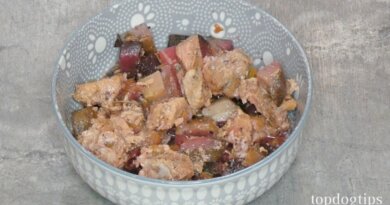Should You Go Gluten Free for Your Psoriasis?
Experts know that certain things make the immune system kick in and cause a psoriasis flare. Those raised, itchy, red psoriasis scales on your skin are a result of inflammation.
Gluten — the protein found in grains such as wheat, rye, and barley — can trigger inflammation in certain people with autoimmune disorders. So you might wonder: Would going gluten-free ease your psoriasis symptoms?
Answer: It’s complicated.
In rare cases, a gluten-free diet can lead to fewer psoriasis symptoms. But experts don’t have a definite answer yet as to whether it can help people with psoriasis across the board.
Some experts think there may be a link between psoriasis and celiac disease, a digestive and autoimmune disorder triggered by gluten. But others disagree. Instead, they think certain people with psoriasis just also have celiac disease or a gluten intolerance.
Those cases are when a gluten-free diet may help, says Rajani Katta, MD, a clinical professor of dermatology in the McGovern Medical School at The University of Texas Health Science Center in Houston.
“If you have either a gluten allergy or evidence of gluten antibodies, then a gluten-free diet is something you could try,” Katta says. “But if you don’t have either of those, we just don’t have any evidence that it would help you.”
Joel M. Gelfand, MD, a professor of dermatology and epidemiology in the Perelman School of Medicine at the University of Pennsylvania, says gluten-free diets aren’t proven to help psoriasis. Instead he suggests a different lifestyle change.
“For patients who are overweight, weight loss can result in modest improvements in psoriasis and better response of psoriasis to certain treatments,” Gelfand says.
Don’t rush to change your diet. Check first with your doctor to get tested for celiac disease, which usually starts with a blood test.
If you do have a gluten allergy, you may want to see a nutritionist to establish a healthy way to remove gluten from your meals.
Even if the benefits of a gluten-free diet vary from person to person, there are a few common eating patterns that have perks for people with psoriasis.
Food choices can help with psoriasis in a few ways:
As a bonus to treatment (not a replacement). Changes in what you eat should always be used alongside standard medical treatment to help manage psoriasis.
To combat obesity. Echoing Gelfand, Katta says that weight loss is important if you have psoriasis and are overweight. Doing so can improve psoriasis.
“Obesity itself is really an inflammatory state,” Katta says. “So we know that just carrying that extra weight, to the level of obesity, causes an increase in levels of inflammation in the bloodstream.”
If you need to make that change, it may be helpful to work with a nutritionist to lose weight in a healthy, practical way.
To ward off other potential diseases. People with psoriasis also have a higher chance of getting diabetes, high blood pressure, and heart disease.
“Even if [people with psoriasis] don’t have other risk factors, just the fact that they have psoriasis and that increased inflammation increases their risk of developing these other conditions,” Katta says.
She urges her patients to eat foods that are rich in “powerful nutrients” that fight inflammation through an anti-inflammatory diet. Though there’s no evidence that it will improve your skin, Katta says, it has been proven to lower the odds of getting other conditions.
Anti-inflammatory foods include:
- Tomatoes
- Olive oil
- Green leafy vegetables
- Nuts
- Fatty fish like salmon and tuna
- Fruits such as strawberries, blueberries, cherries, and oranges
“People with psoriasis have an increased risk of cardiovascular disease,” Gelfand says, “so I generally recommend the Mediterranean diet, as this is proven to lower vascular disease risk.”
The Mediterranean diet is built on a few best practices:
- Eat meals built on vegetables, beans, and whole grains
- Have fish at least twice a week.
- Use olive oil instead of butter as a cooking fat.
- Serve fresh fruit for dessert.
if (!document.getElementById(‘woobox-root’)) { var wooRoot = document.createElement(‘div’); wooRoot.setAttribute(‘id’, ‘woobox-root’); document.getElementsByTagName(‘body’)[0].prepend(wooRoot); (function (d, s, id) { var fjs = d.getElementsByTagName(s)[0]; if (d.getElementById(id)) return; var js = d.createElement(s); js.id = id; js.src = ‘https://woobox.com/js/plugins/woo.js’; fjs.parentNode.insertBefore(js, fjs); }(document, ‘script’, ‘woobox-sdk’)); }



